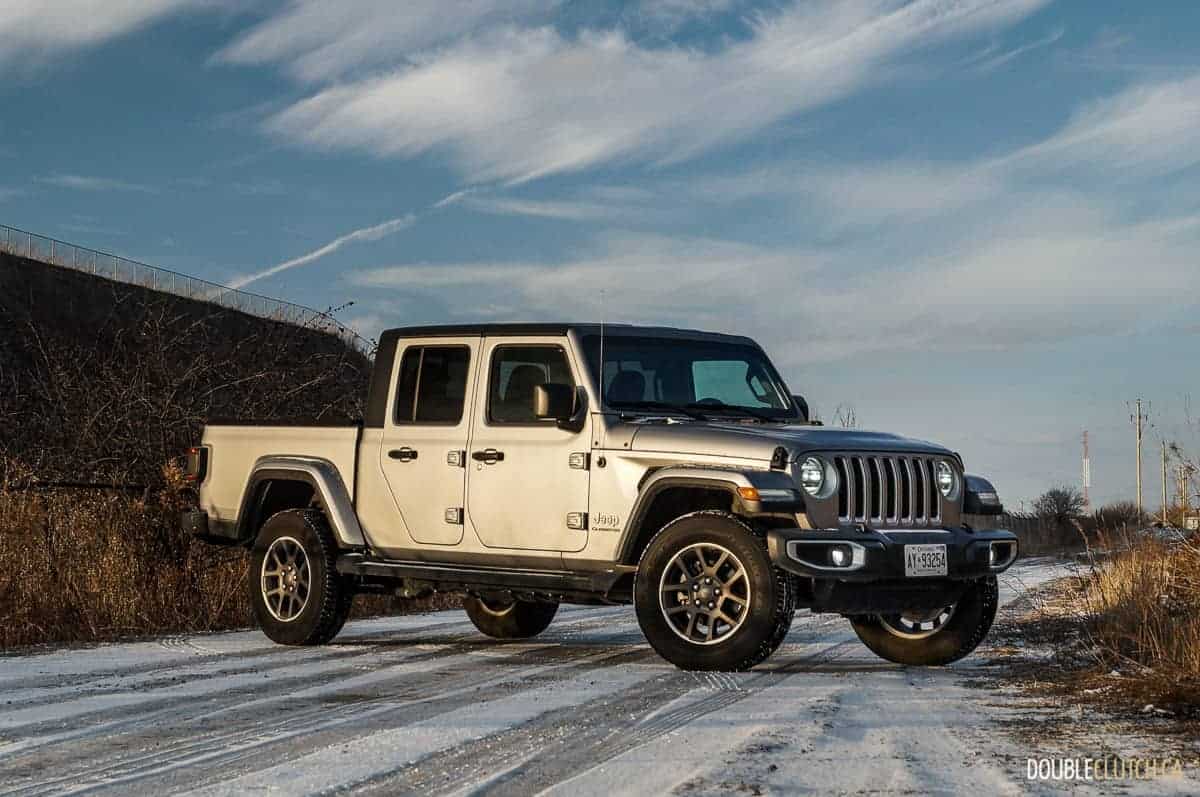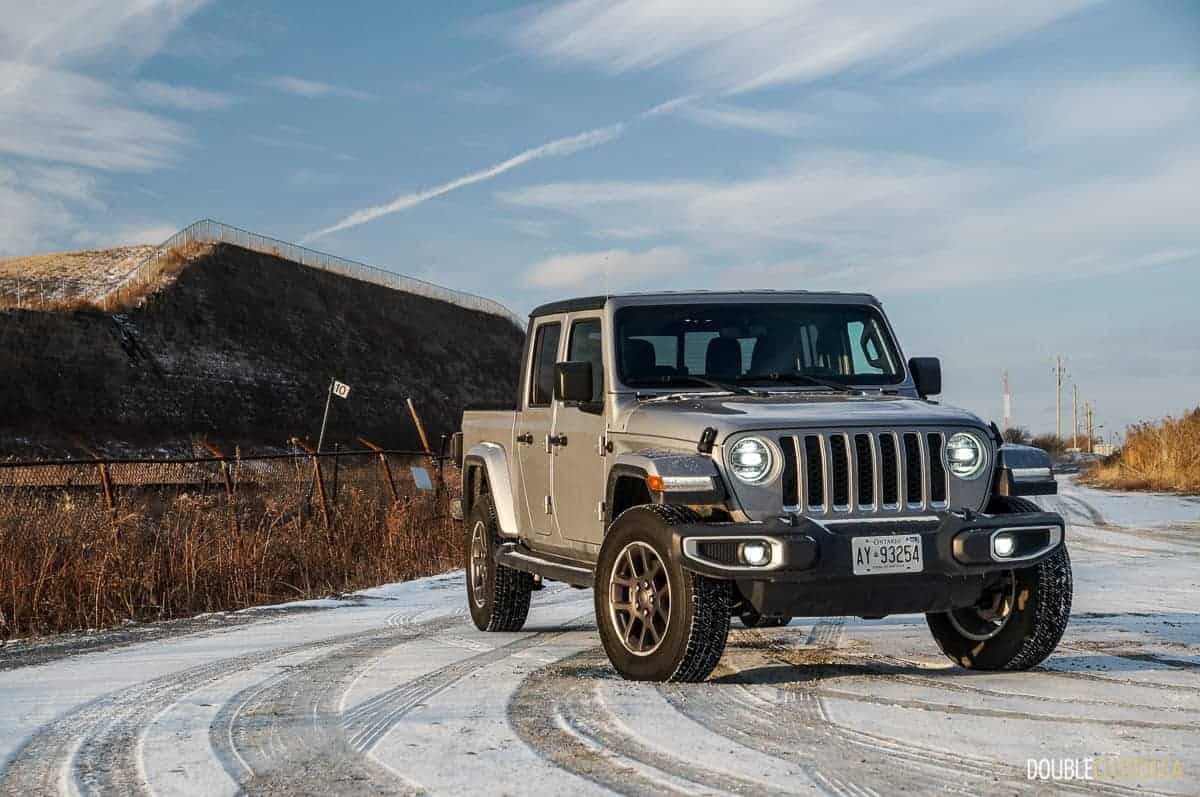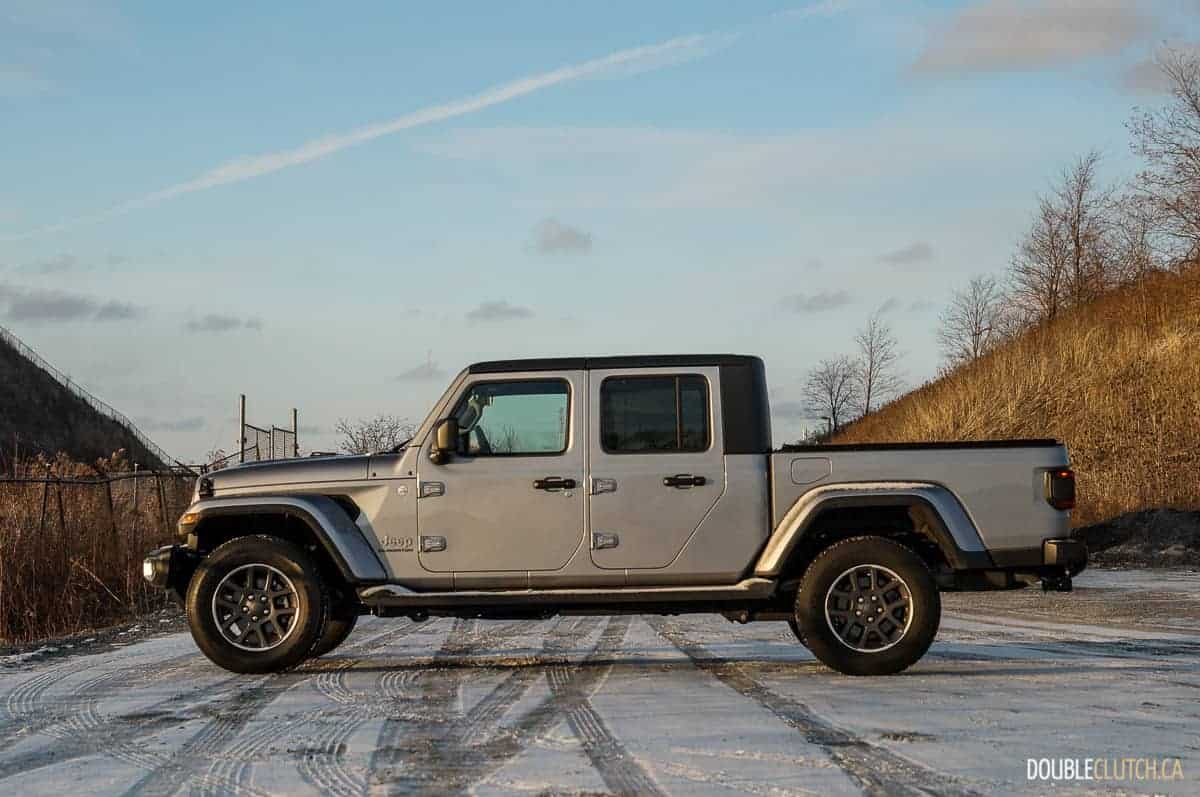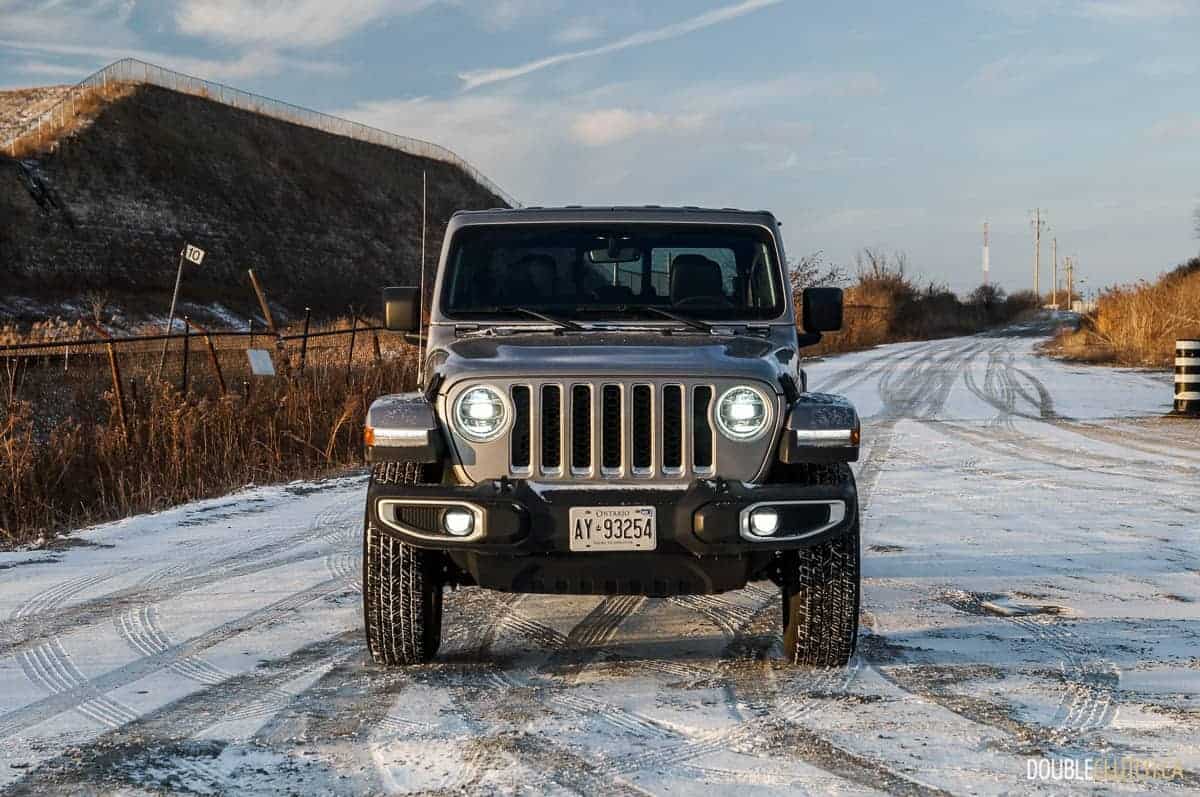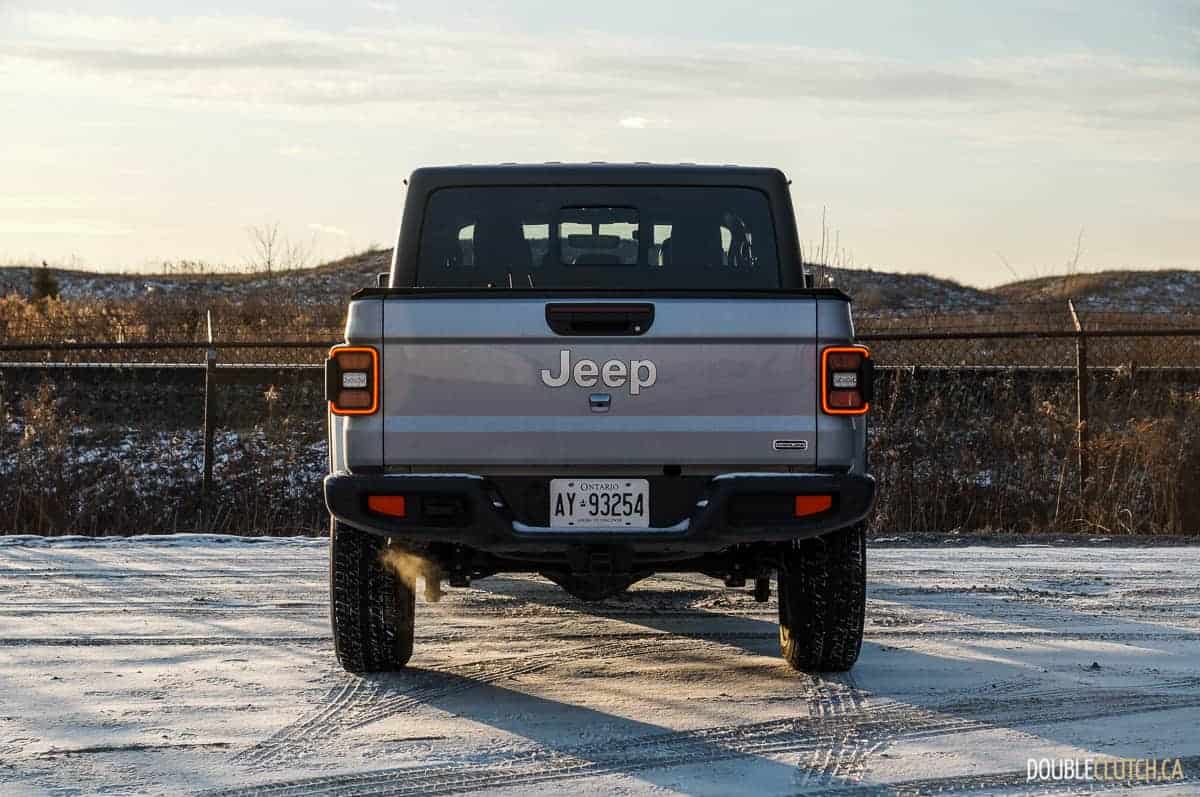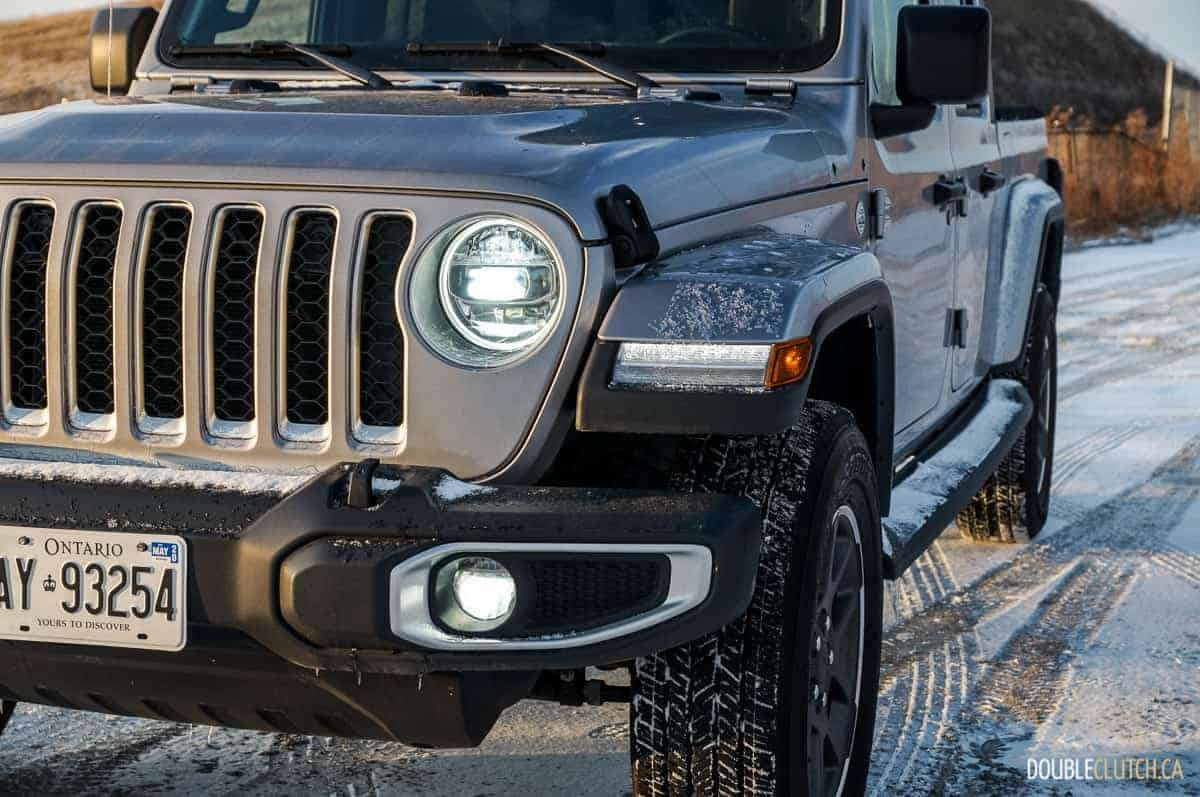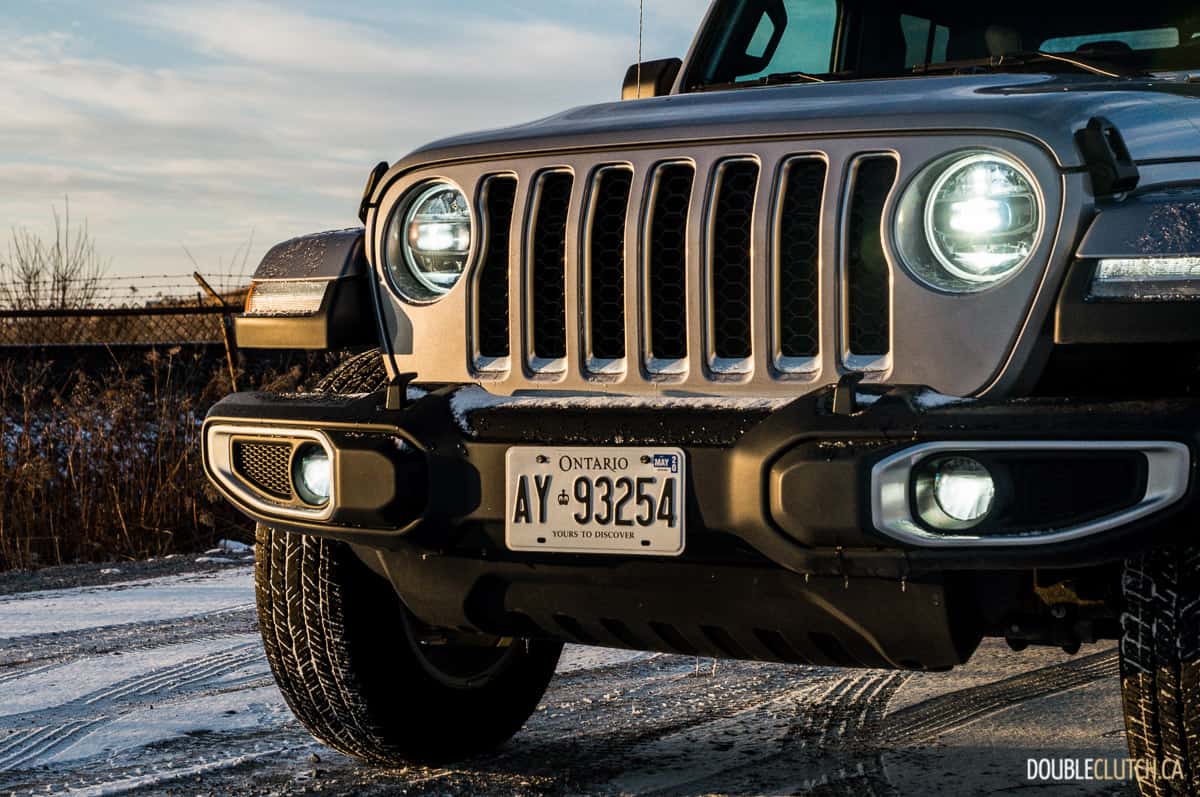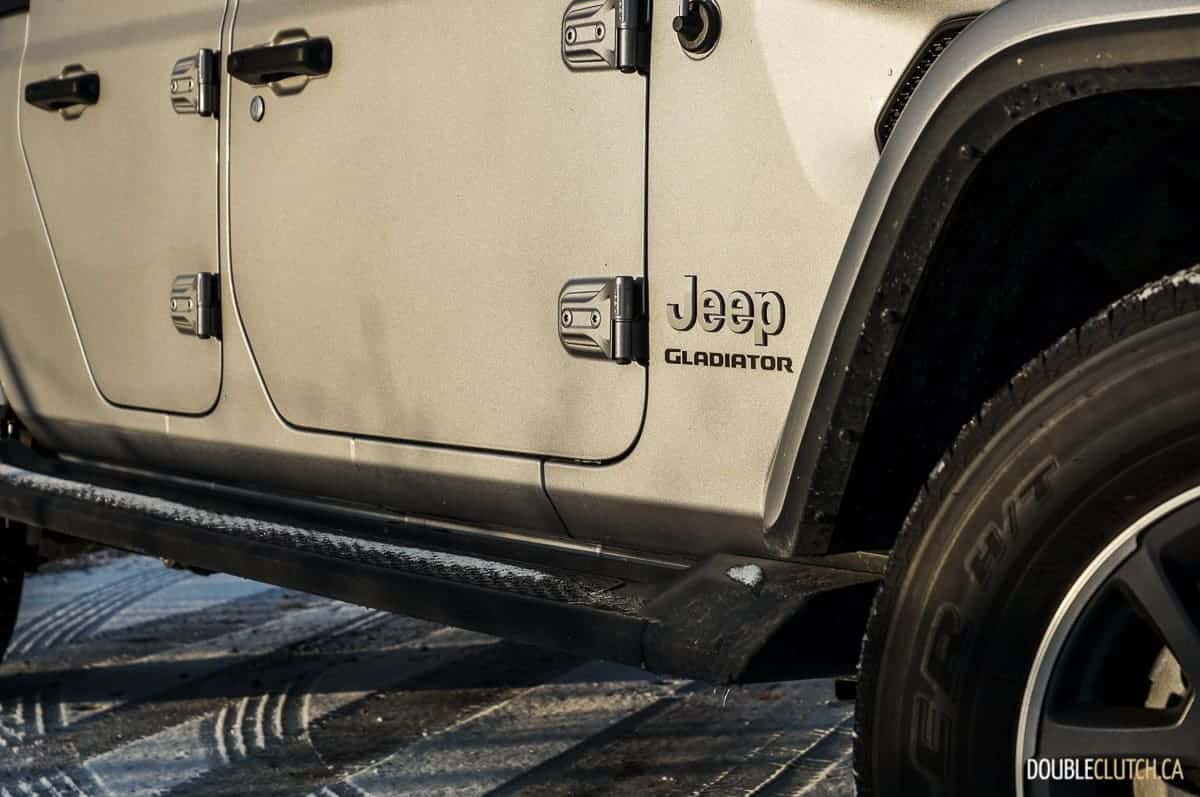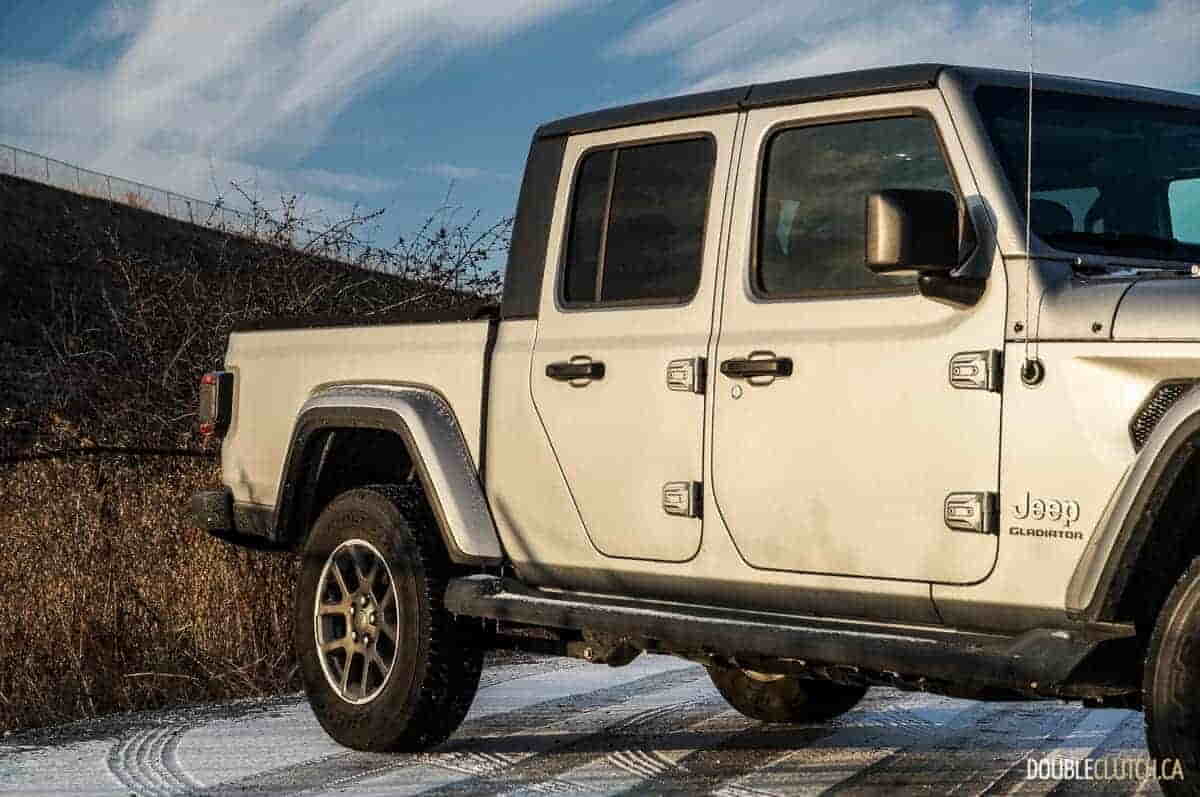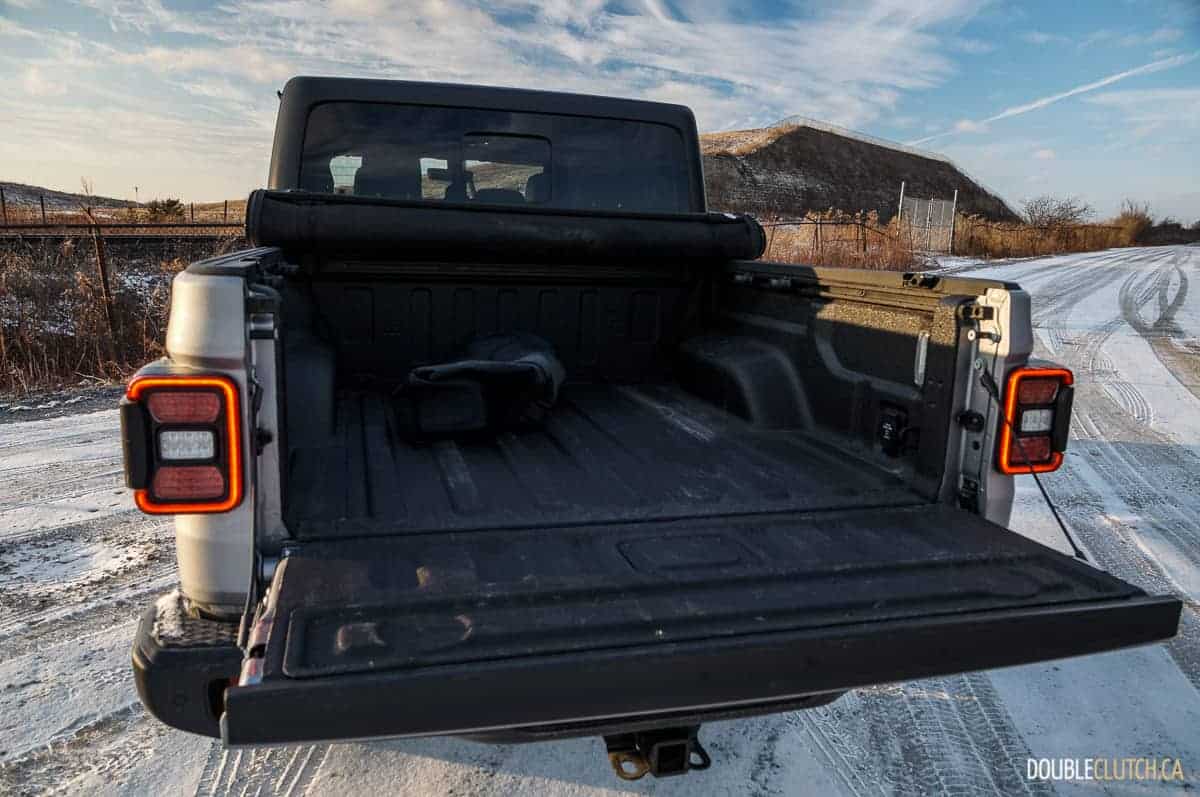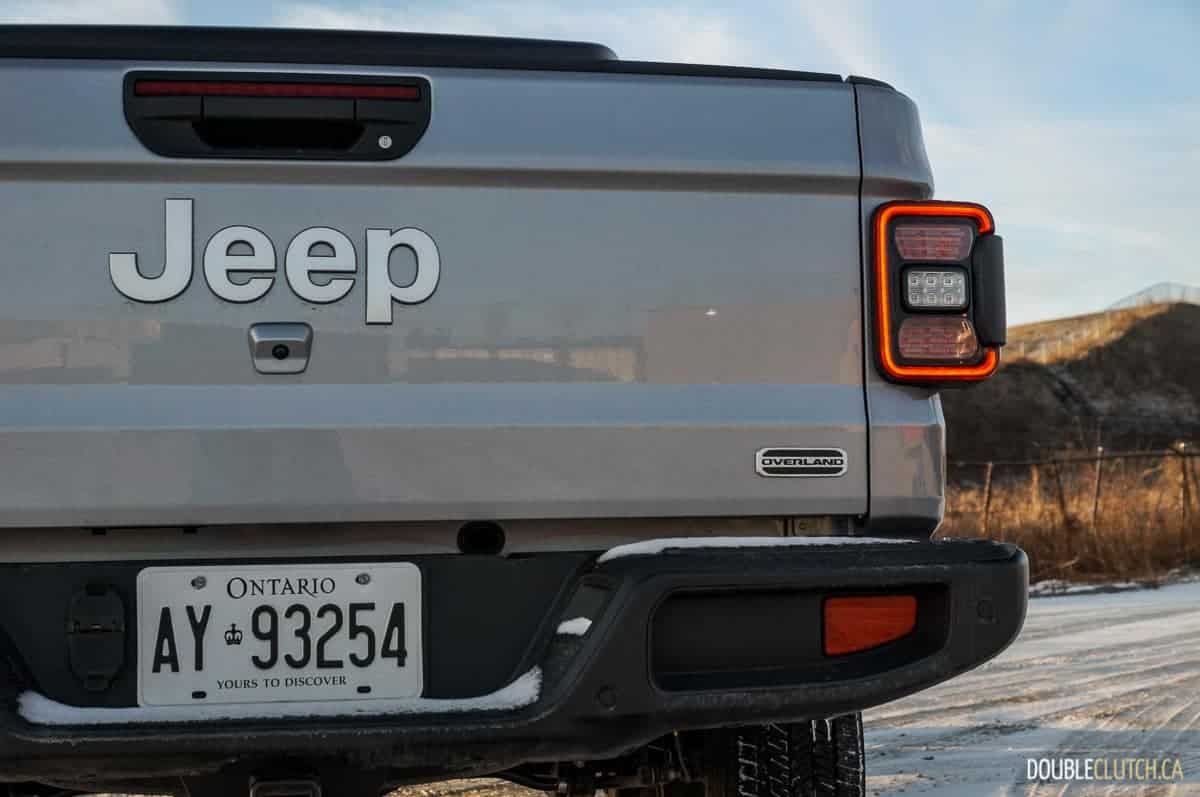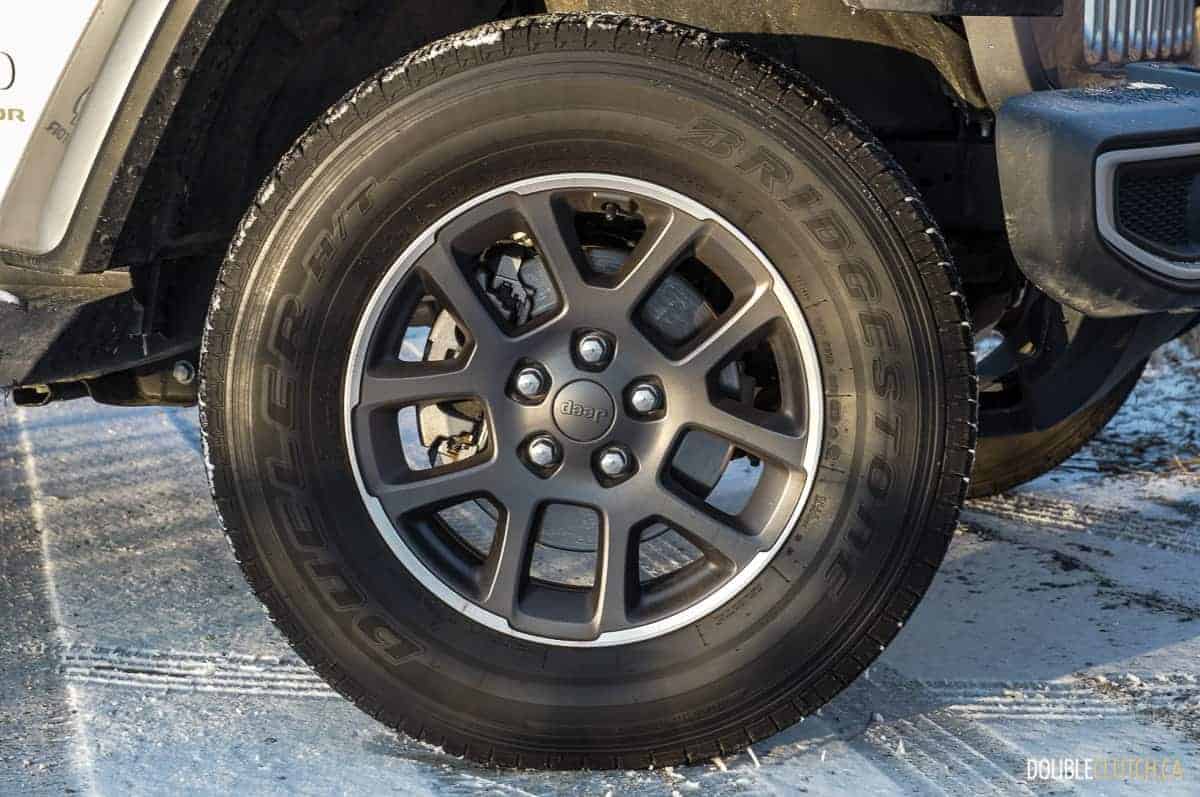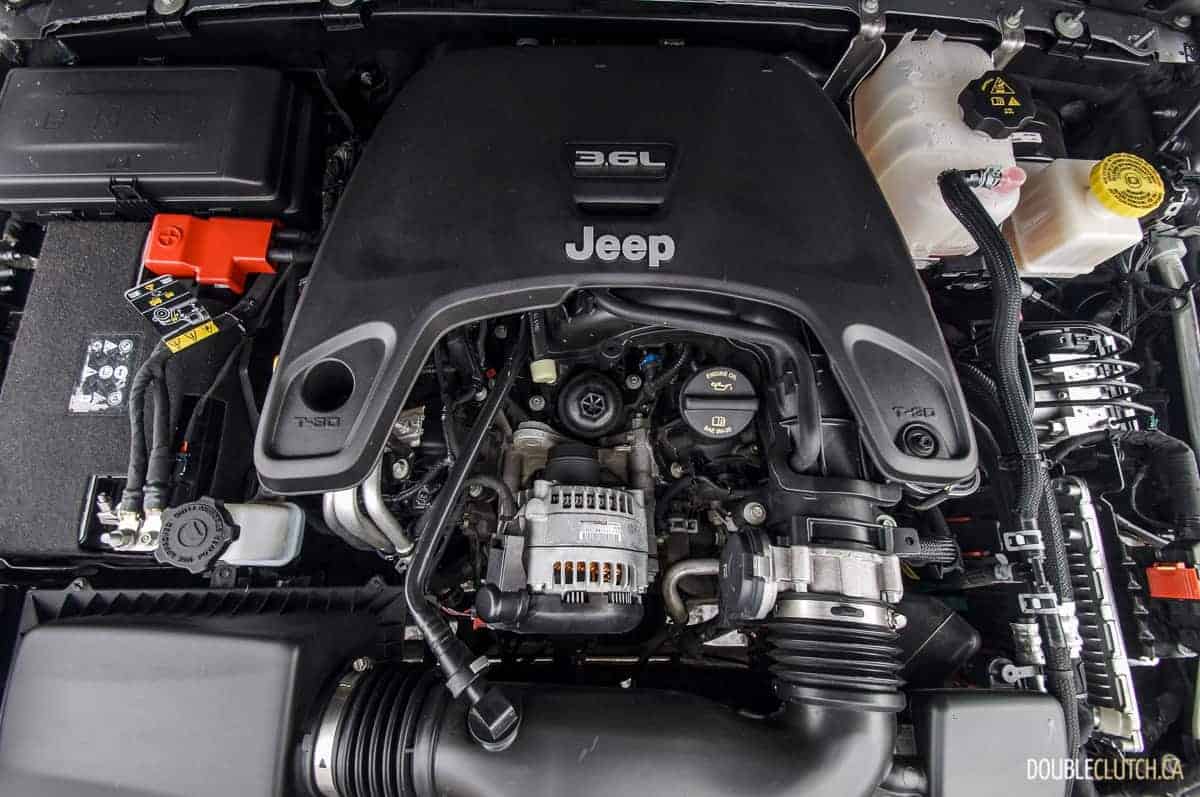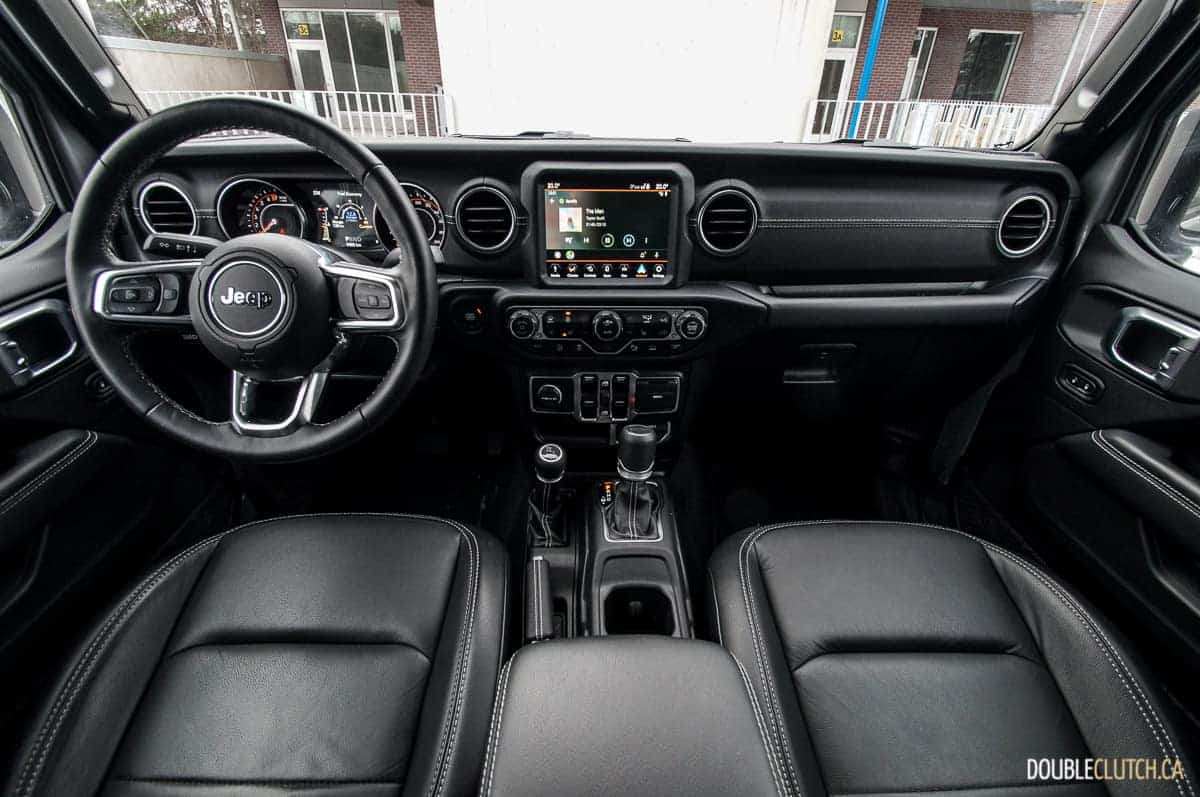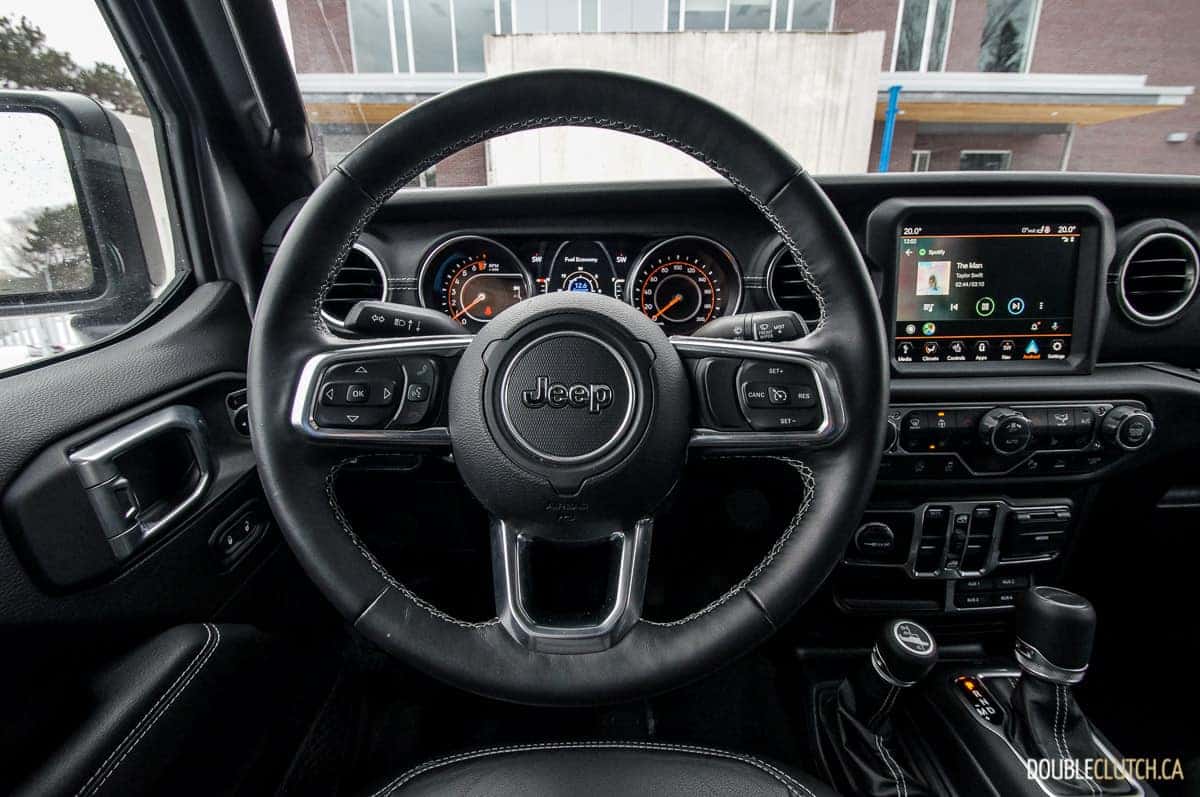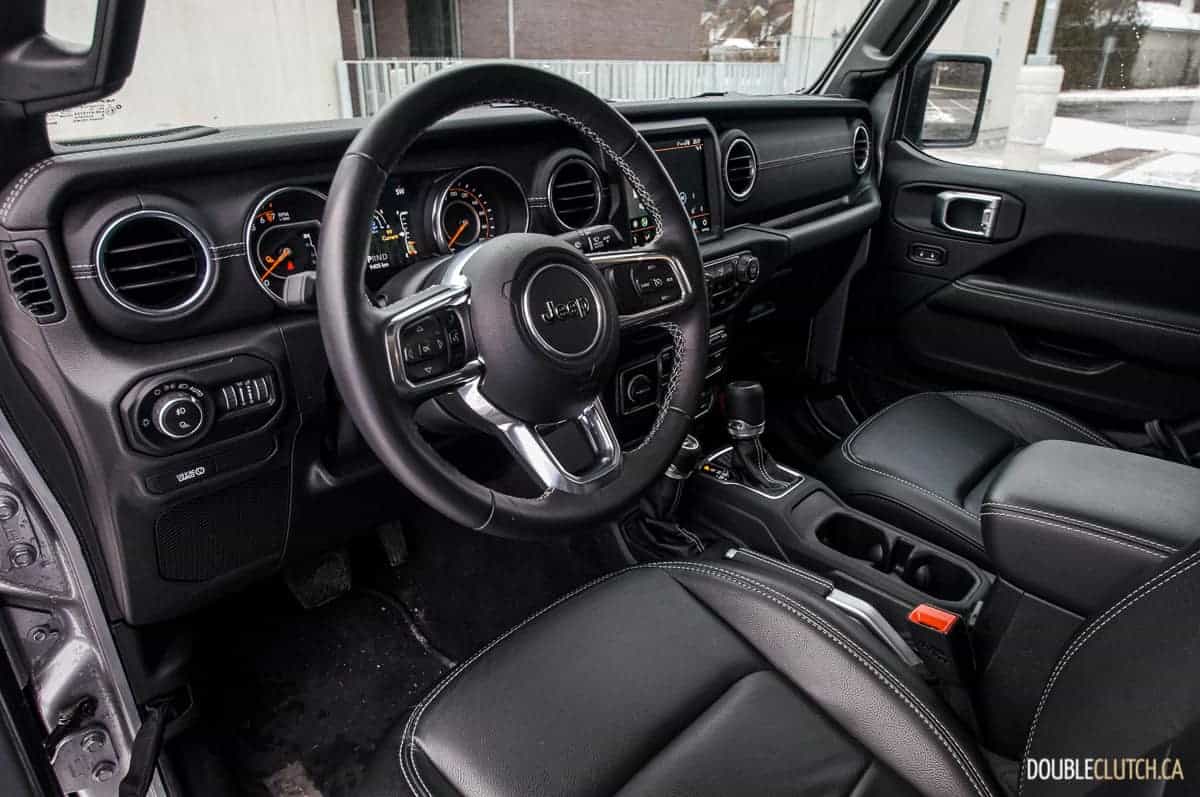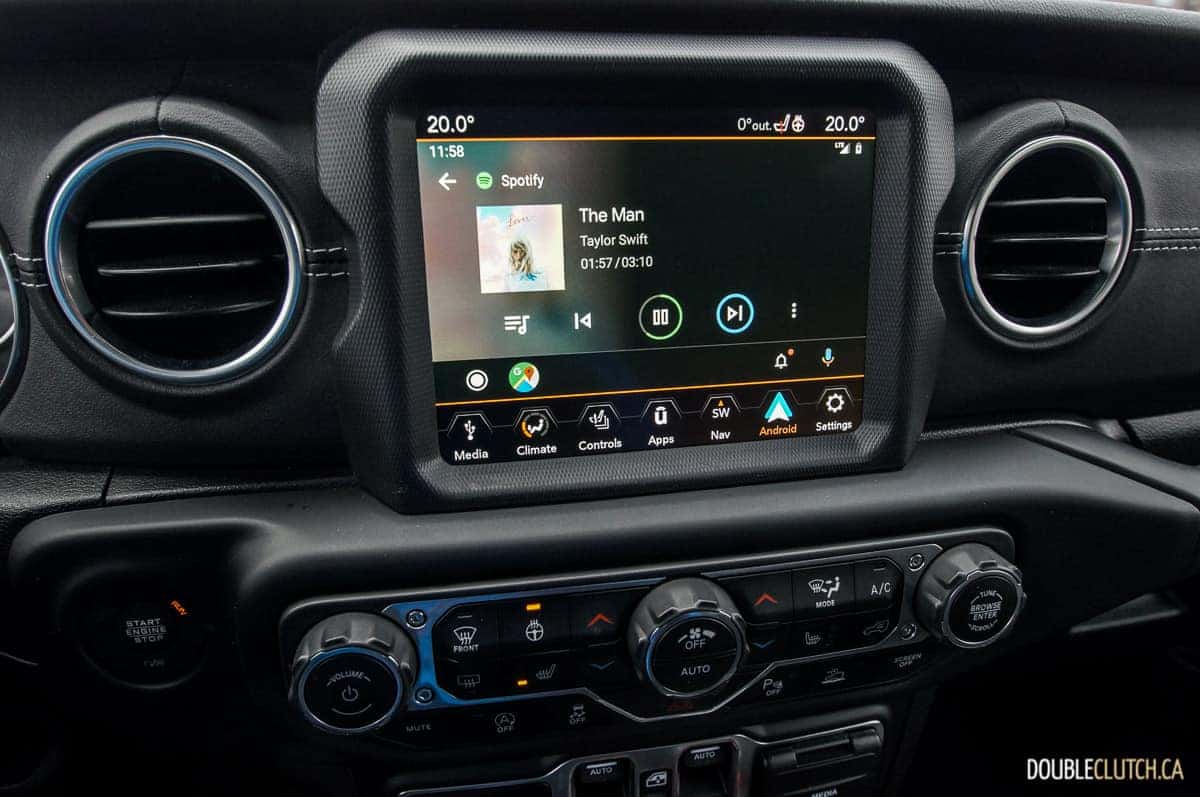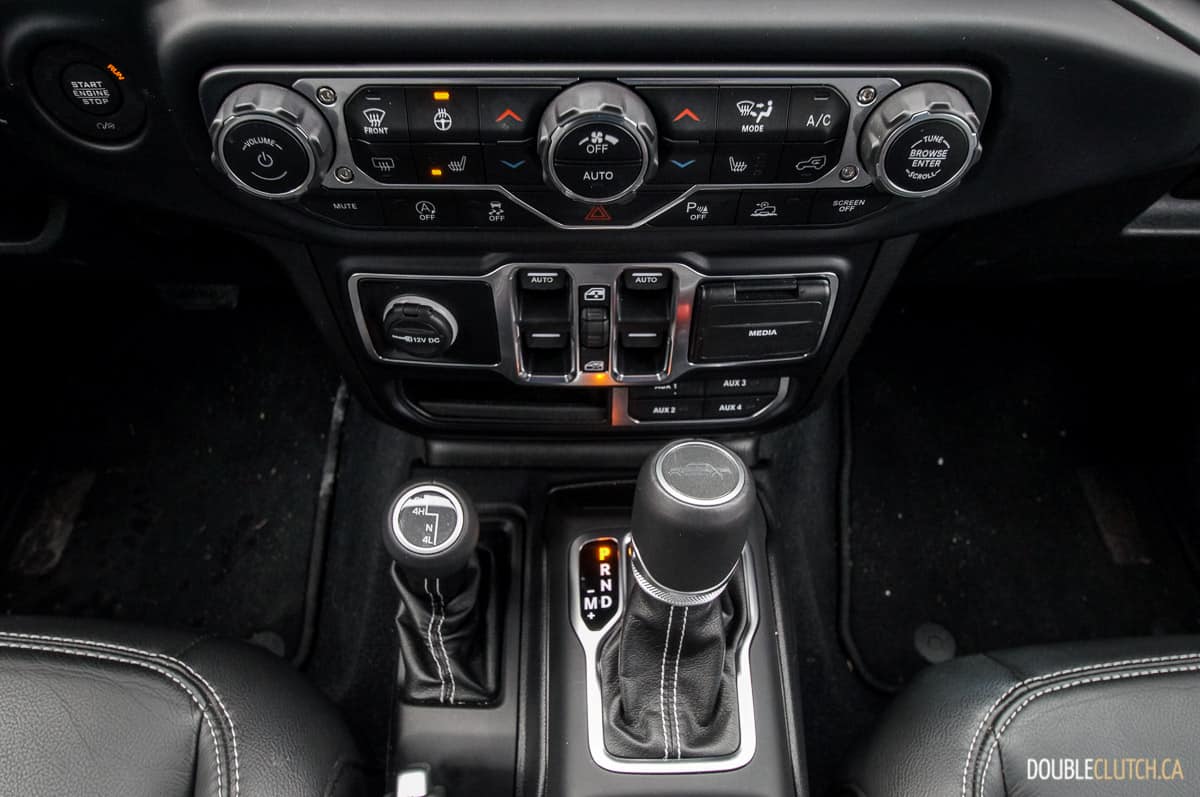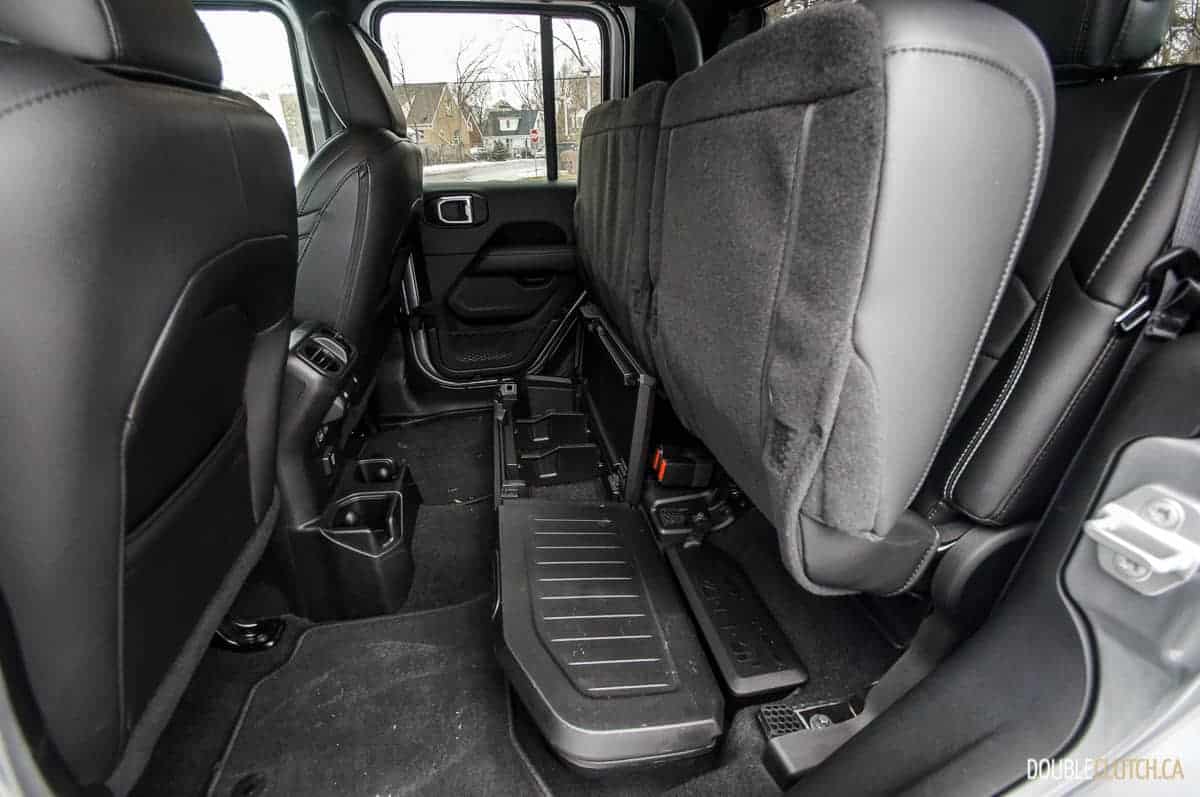Back in 1986, Jeep brought the Comanche pickup to the market using the wildly popular Cherokee sport utility vehicle. It featured impressive payload capacity and sported body-on-frame construction for the rear cargo area, but was discontinued after 1992. With the more recent resounding success of the JK and JL generations of the Wrangler, Jeep sought to take advantage of this untapped potential with a new pickup once again – and now with a new but also resurrected name: Gladiator. We got the keys to test out a 2020 Jeep Gladiator Overland 4×4, and while we thought that the Wrangler was a looker, the Gladiator adds even more road presence with a five-foot bed.
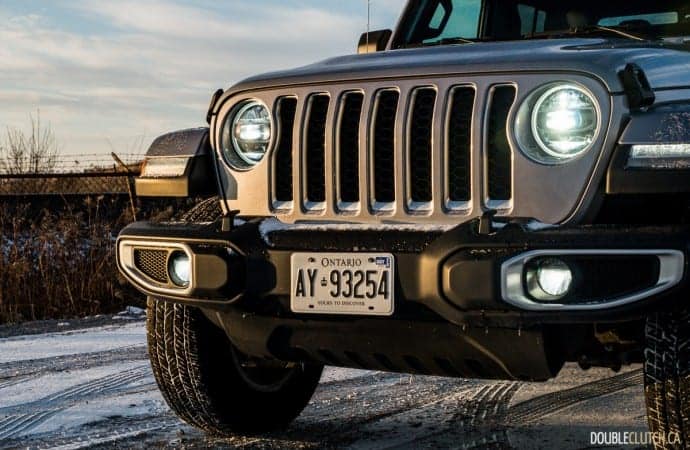
In order to get a pickup format to work, the relatively stubby JK Wrangler Unlimited body and frame needed to be stretched to make the “JT”. The wheelbase went from 3,010 millimetres (118.4 inches) to 3,487 millimetres (137.3 inches), and overall length grows from 4,790 millimetres (188.4 inches) to 5,537 (218.0). Despite this, the Gladiator’s newly found larger dimensions, maneuverability is kept in check and a turning circle of 44.5 feet is surprisingly impressive. In this size range, direct competitors will be the Chevrolet Colorado, GMC Canyon, Toyota Tacoma, Ford Ranger, Honda Ridgeline, and Nissan Frontier.
Three trim levels are available for the Gladiator – Sport S, Overland, and Rubicon. The Overland on test starts at $49,495 and is likely a good sweet spot for those not looking for the full off-road kit of the Rubicon. Standard features include keyless entry with push-button start, a fuel tank skid plate, Command-Trac part-time shift-on-the-fly 4×4 system with high and low range, Dana M210/M220 front and rear axles, a 220-amp alternator, leather-wrapped steering wheel, and automatic climate control. There’s also plenty of customizability with a whole gamut of accessories and options, and the test car was no exception.
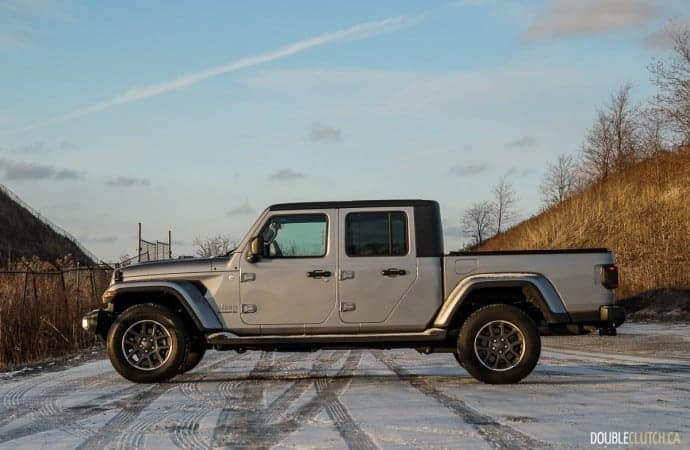
Billet Silver Metallic paint was an extra $245, and leather seats were $995. A Trailer Tow Package (heavy duty engine cooling, Class IV hitch receiver) was $500, LED head and taillamps were $895, and $1,395 added navigation, a larger 8.4-inch touch screen, and Alpine premium audio. With a $1,595 eight-speed automatic replacing the standard six-speed manual, $395 for a wireless auxiliary Bluetooth speaker, and $525 for a limited slip differential, among other things, the total as-tested price ballooned to $61,340.
Although the various trims and equipment levels can make the towing and payload capacity fluctuate, the Gladiator settles between 2,721 to 3,469 kilograms (6,000 to 7,650 pounds) of towing, and 517 to 725 kilograms (1,140 to 1,600 pounds) of payload in the bed. This compares favourably and throws the Jeep right into the thick of its aforementioned peers. When considering similar powertrains and options, there isn’t exactly a winner or loser in this area, but the Gladiator’s relatively shallow and short five-foot bed will limit the size of cargo by a bit. It’s most likely a small trade-off to maintain consistency with the body lines and rear fender flares.
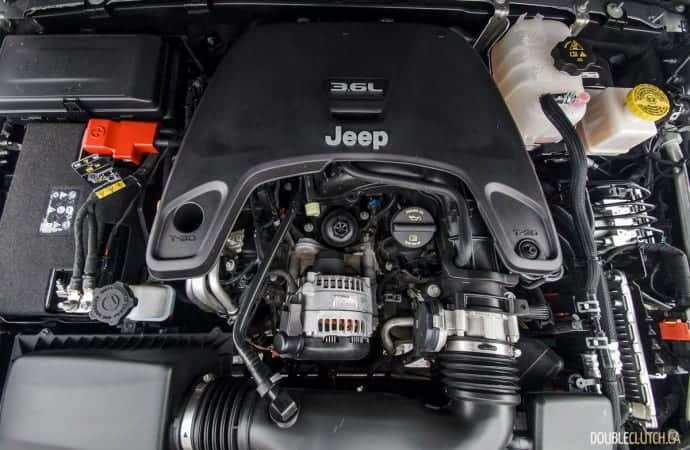
For the initial run of 2020 Gladiators, only a 3.6-litre Pentastar V6 engine is offered, and is the same unit used in the Wrangler and Wrangler Unlimited. Peak output remains at 285 horsepower and 260 lb-ft. of torque, and when coupled to an excellently smooth and decisive eight-speed automatic, the Gladiator gets by with more than adequate oomph. This powertrain is considerably less laboured than the same engine paired with a five-speed automatic in the previous-generation JK Wrangler, and continues to pull stronger in the middle to upper end of the rev range. Later on in the year, a 3.0-litre diesel V6 lifted from the Ram 1500 series of trucks will become available.
Fuel economy figures for the new Jeep pickup weigh in at 13.7L/100KM in the city and 10.7L/100KM on the highway. Observed economy in cold wintery weather saw 12.3L/100KM in mostly highway driving. The Gladiator’s stop/start technology aids in reducing consumption in dense traffic, and these numbers aren’t bad at all for a truck of this type. Regular octane fuel is acceptable, and fuel capacity is 83 litres.
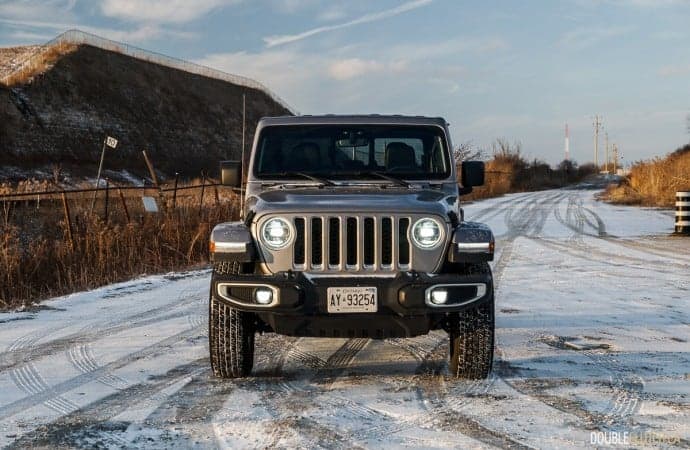
With 255/70R18 all-season tires, the Gladiator Overland is the best case scenario for on-pavement driving. For those who insist, all-terrain tires in the same size are $295 extra. The all-season tread pattern is not aggressive at all for off-road use, but this results in quieter highway cruising, high load bearing capability, more sure-footed on-road handling, and improved fuel economy thanks to less rolling resistance. Ride quality is as expected for a body-on-frame vehicle, and large potholes and bumps result in the typical jitters – only the unibody Honda Ridgeline gets away scot-free here. Steering is light, but offers just enough precision to make tight maneuvers easy – overall, the Gladiator drives smaller than it looks.
Inside, the Gladiator is pretty much no different from the ordinary JL Wrangler Unlimited, but it needs to be emphasized that it is a vast improvement over the older JK generation. The UConnect 8.4 interface is easy to use and combines with Apple CarPlay and Android Auto smartphone pairing functionality to create one of the better infotainment systems in the business. Unlike some other Fiat Chrysler Automobiles products in recent memory, hard buttons are included for heated seat and heated steering wheel control. Touch points and overall quality are generally good, even though it’s a sea of (water resistant!) monotonous black plastic.

For passengers, front seat comfort shouldn’t be an issue for occupants of all shapes and sizes, but going three-wide in the rear makes for a more claustrophobic experience thanks to narrower accommodation for hip and shoulder room. Getting larger cargo or car seats into the back seat can be a bit more of a challenge than expected for a crew cab pickup truck of this size, likely owing to the fact that the Gladiator’s rear doors and door opening are parts-bin units taken from the Wrangler Unlimited. It’s understandable to keep costs down, but it makes things a little more inconvenient than they need to be.
Fresh off a win of our Truck of the Year Award for calendar year 2019, the 2020 Jeep Gladiator Overland 4×4 is truly an option that the market has been clamouring about for the last few years. Over our week of testing, it got a huge amount of attention on the roads, with many gawking at the badass pickup truck Jeep cruising along next to them. It’s not exactly cheap, though, and a reasonably equipped model will clear sixty grand without batting an eye. This makes it more than a few thousand more expensive than a comparable Toyota Tacoma, Ford Ranger, or General Motors’ Canyon/Colorado, but the Gladiator has one thing the other midsize pickups don’t, on top of being a good vehicle: sheer presence. And for some, that might just be worth the money.
See Also:
2019 Chevrolet Colorado ZR2 Bison
2019 Honda Ridgeline Black Edition
First Drive: 2019 GMC Sierra Elevation

